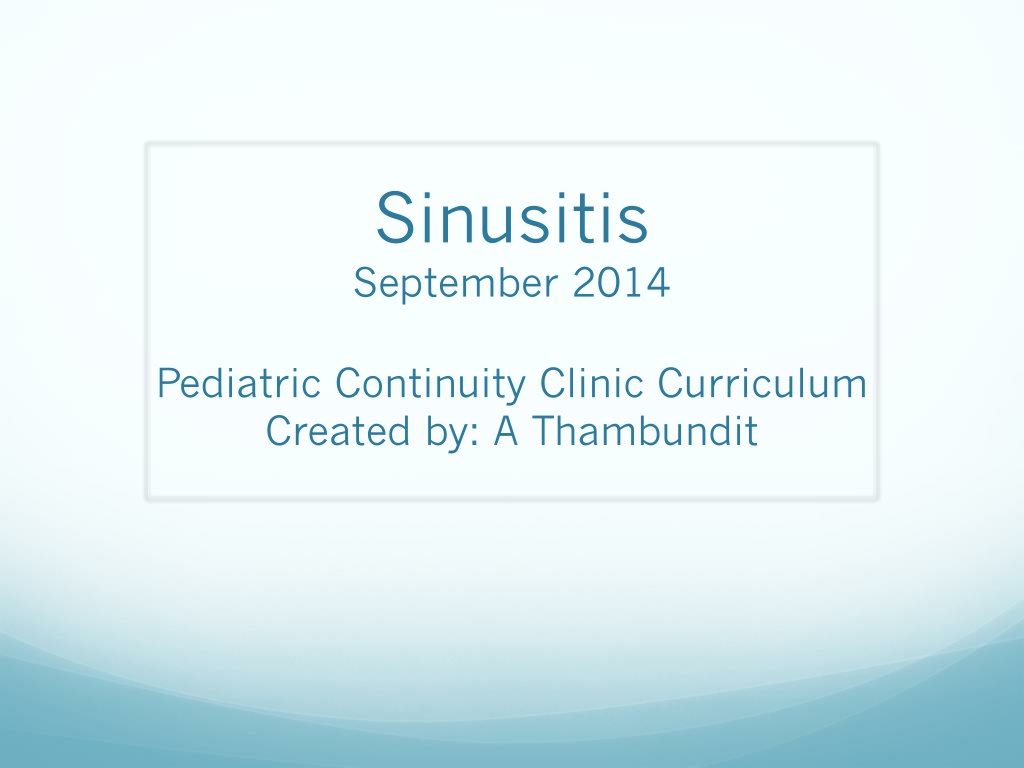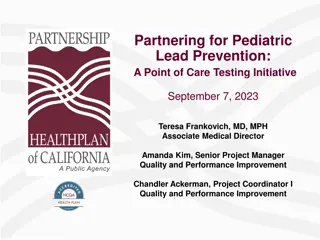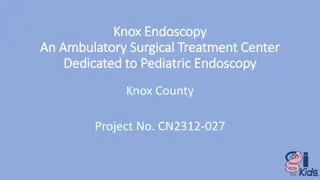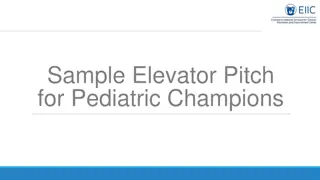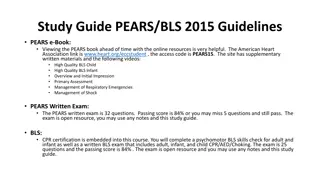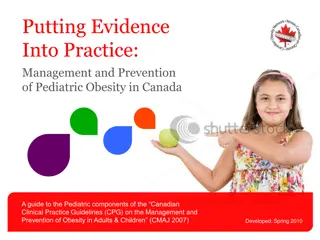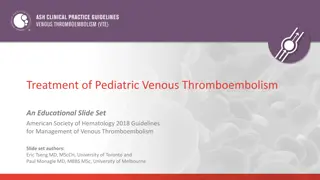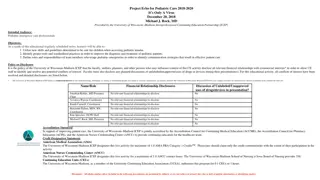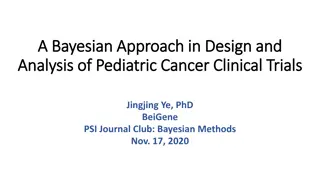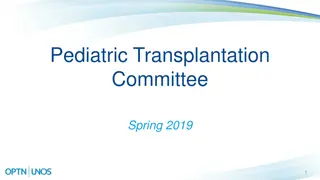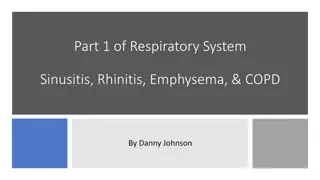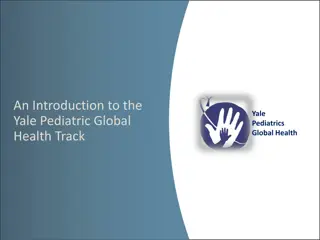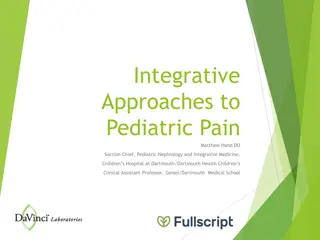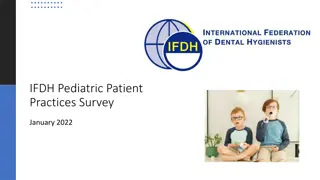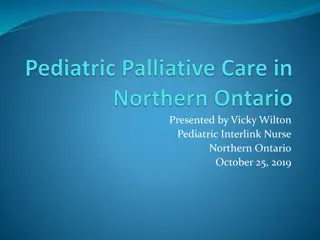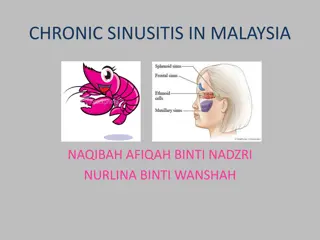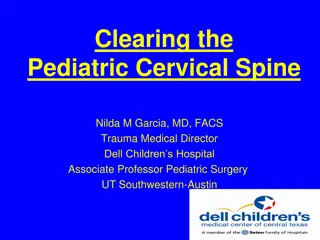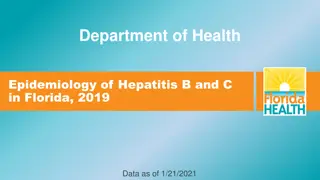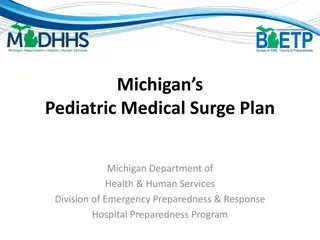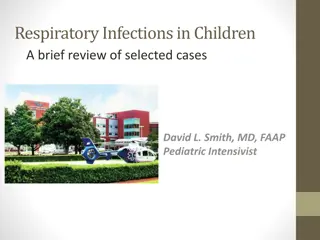Pediatric Sinusitis Curriculum and Clinical Cases
This content focuses on sinusitis in pediatric patients, covering topics such as clinical criteria for diagnosis, pathophysiology, complications, treatment options, and current guidelines. It includes case studies involving common symptoms like rhinorrhea, cough, and decreased energy levels, highlighting the differences between viral upper respiratory infections and acute bacterial sinusitis.
Download Presentation

Please find below an Image/Link to download the presentation.
The content on the website is provided AS IS for your information and personal use only. It may not be sold, licensed, or shared on other websites without obtaining consent from the author. Download presentation by click this link. If you encounter any issues during the download, it is possible that the publisher has removed the file from their server.
E N D
Presentation Transcript
Sinusitis September 2014 Pediatric Continuity Clinic Curriculum Created by: A Thambundit
Objectives Describe clinical criteria for Diagnosis of Acute Bacterial Sinusitis (ABS) Understand the pathophysiology and complications of ABS Learn to recognize ABS in order to initiate prompt treatment Discuss treatment options for ABS Review current guidelines
Case #1 A 4 yo girl presents to the clinic with rhinorrhea and daytime cough for the past 2 weeks. She has been afebrile but has had decreased appetite and energy level. She has no sick contacts at home but does attend daycare. Physical exam revealed clear rhinorrhea and cough. Otherwise, the remainder of the exam was unremarkable. What is the diagnosis based on clinical presenting symptoms ?
Viral URI Nasal obstruction and discharge +/- sore throat Clear, watery discharge becomes thick and mucoid, then colored and opaque Hoarseness and cough Fever more common in children <8 yo Resolves in 1 to 2 days Clinical course lasts 5-10 days Symptoms peak day 3 to 5 <10% have symptoms for >10 days
Acute Bacterial Sinusitis Affects ~1% of children each year 2 most common predisposing factors Viral upper respiratory tract infection (~80% preceded by viral URI) Allergy 3 courses of illness: Course Length Persistent Illness 10-30 days Severe Onset >3 consecutive days Worsening Course 1 week after onset Presenting symptoms Nonspecific rhinorrhea or Low grade fever or Cough Increase rhinorrhea New/recurrent fever New/Recurrent cough Purulent rhinorrhea and T > 39 C +/- Cough *no improvement* *acute onset* *Biphasic* Note: Cough occurs mostly during daytime. Nighttime cough should raise suspicion for postnasal drip or reactive airway disease.
Back to Case #1. A 4 yo girl presents to the clinic with rhinorrhea and daytime cough for the past 2 weeks. She has been afebrile but has had decreased appetite and energy level. She has no sick contacts at home but does attend daycare. Physical exam revealed clear rhinorrhea and cough. Otherwise, the remainder of the exam was unremarkable. What is the diagnosis ? Answer: Acute Bacterial Sinusitis
Case #2 A 6 yo boy presents to the clinic with 4 day history of fever (T 39 C) and thick, yellow nasal discharge. He has been complaining of headache and has not eaten or drank much. Mother has been giving Tylenol per instructions from PAH. She states that the fever improves but will go back up before the next dose of medication is due. What is the diagnosis ? Should you get imaging to confirm your diagnosis ? When is it appropriate to obtain imaging and what imaging options are available ?
Case #2 A 6 yo boy presents to clinic with 4 day history of fever (T 39 C) and thick, yellow nasal discharge. He has been complaining of headache and has not eaten or drank much. Mother has been giving Tylenol per instructions from PAH. She states that the fever improves but will go back up before the next dose of medication is due. Dx: Severe Acute bacterial sinusitis (ABS) No imaging! Remember ABS is a CLINICAL diagnosis CT scan and/or MRI with contrast of paranasal sinuses indicated in child suspected of having orbital or CNS complications of ABS
Pathophysiology Obstruction of sinus ostia Decreased mucociliary clearance Development of viscous secretions promotion of conditions for bacterial growth Acute Bacterial Sinusitis
Complications Extracranial Periorbital inflammatory edema Subperiosteal abscess Orbital cellulitis Orbital abscess Intracranial Subdural empyema Brain abscess Meningitis Venous sinus thrombosis
Role of Imaging NOT recommended in patients with uncomplicated infection due to LOW SPECIFICITY Imaging studies cannot distinguish inflammation caused by viruses from that caused by bacteria. Similar abnormalities seen in those with viral URI vs ABS Diffuse opacification Mucosal swelling Air-fluid levels Indicated in child suspected of having orbital or CNS complications of ABS
Imaging: CT vs. MRI CT scan MRI with contrast = more sensitive - Better at picking up intracranial complications - Takes longer - Requires sedation in young kids - No radiation = preferred imaging - Better at picking up orbital complications - Speed - Readily available - Radiation exposure Current recommendations CT scan MRI with contrast preferable over CT scan in: young adolescents with suspected intracranial complications and no required sedation Persistent clinical concern CT scan reveals incomplete information
Case #3 A 9 yo girl with history of allergic rhinitis presents for evaluation of runny nose, daytime cough, and low grade fever for the past 11 days. She presented 3 days ago and you recommended supportive treatment for suspected viral URI. Mother states that her fever has improved but she still has runny nose and cough. You diagnose the patient with acute bacterial sinusitis. What type of ABS does the patient have ? What is your recommendation for treatment ? If antibiotics, what is first line ? What are the top 3 (non-viral) pathogens responsible for her illness ?
Case #3 What type of ABS does the patient have ? Persistent ABS What is your recommendation for treatment ? Outpatient observation for 3 days OR Prescribe antibiotic therapy If antibiotics indicated, what is first line ? Amoxicillin +/- Clavulanate What are the top 3 (non-viral) pathogens responsible for her illness ? S. pneumoniae H. influenza M. catarrhalis
To Treat or not to treat ABS ? Clinical Presentation Severe Uncomplicated ABS only Antibiotics Worsening Antibiotics Persistent Antibiotics or observation for 3 more days Antibiotics ABS with complications Antibiotics Antibiotics ABS with coexisting bacterial infection*, chronic disease**, treated in the past 4 weeks Antibiotics Antibiotics Antibiotics *AOM, PNA, adenitis, GAS pharyngitis. **asthma, cystic fibrosis, immunodeficiency, previous sinus surgery In severe ABS, a temp >39 C and purulent discharge for >3 consecutive days likely indicates bacterial infection In worsening ABS, biphasic course not consistent with steady improvement seen in viral URI In uncomplicated persistent ABS, consider on case by case basis with parents weighing symptom severity, recent antibiotic use, cost of antibiotics, ease of administration Symptoms can improve on their own Risk of suppurative complication is low Benefits vs Risk of antibiotic (side effects: diarrhea, rash)
1st line treatment Amoxicillin +/- clavulanate Age 45 mg/kg/day divided in 2 doses > 2 yo 90 mg/kg/day divided in 2 doses <2 yo Severity Mild-Moderate Moderate-severe Daycare - + Treated in last 4 wks? - + Treatment Length 10-14 days or 7 additional days after the day the symptoms resolved Susceptibility and Resistance 10-50% of S. pneumoniae are nonsusceptible to penicillin 10-40% of H. influenzae and ~100% of M. catarrhalis are B-lactamase positive
Special considerations Ceftriaxone IV or IM (50 mg/kg dose) Can t tolerate PO or vomiting All 3 pathogens have susceptibility of 95-100% Can complete course with oral antibiotics if improvement seen at 24 hour. If not, continue parenteral therapy Cefdinir, Cefuroxime, Cefpodoxime Late/Delayed/Type I hypersensitivity to PCN S. pneumoniae has 60-75% susceptibility H. influenzae has 85-100% susceptibility In patients <2 yo and type I hypersensitive, can use Clindamycin or Linezolid with Cefixime Levofloxacin
Antimicrobial Agents Used in the Treatment of Sinusitis in Children If there is worsening symptoms or failure to improve within 72 hours 1. Reassess patient 2. Confirm diagnosis of ABS 3. Start antibiotics if patient was being observed or 4. Change antibiotics if patient already being treated with antibiotics
Adjuvant Therapy Intranasal glucocorticoids Significant improvement in adults No good RCT s in children Nasal saline irrigation 1 study showed improvement in nasal airflow c/w patient treated with antibiotics and decongestants only Decongestant, Mucolytic, Antihistamine Data insufficient Antihistamines should not be used as primary tx for ABS
Conclusion Acute bacterial sinusitis in children commonly follows a viral upper respiratory infection. Sinusitis in children has three predictable patterns of presentation: persistent, severe, and worsening symptoms. The diagnosis of acute bacterial sinusitis should be made on the basis of the history per clinical guidelines provided, generally without the use of imaging studies. Although the optimal duration of therapy is not known, a course of 10 to 14 days is adequate in most patients. Amoxicillin+/- clavulanate should be considered as the first-line treatment for sinusitis in children. Confounding illnesses, existence of intracranial or orbital complications, recent treatment with antibiotics within the past 1 month, and local resistance pattern are important in determining low vs high dose treatment Neither antihistamines nor decongestants are recommended because they are unlikely to be of benefit and may have adverse effects.
PREP Question The mother of a 4-year-old boy brings him into your office for evaluation of nasal congestion that has persisted over the last 4 weeks. He has been previously healthy and had no fevers during the course of this complaint. His appetite and activity level are normal. He has some difficulty sleeping at night due to the stuffy nose. His growth has been normal. Physical examination reveals unilateral purulent nasal discharge that is malodorous. Of the following, the BEST next step is A. computed tomography of the sinuses B. nasal irrigation with saline C. nasal speculum examination D. oral antibiotics E. otolaryngology referral
PREP Question A 6-year-old boy who has moderate persistent asthma has experienced more frequent asthma symptoms as well as nasal congestion and headaches for the past 4 weeks. Recently, he went to the dentist because of upper tooth pain, but the dentist stated his examination findings were normal, and there was no evidence of dental caries. Of the following, the MOST likely cause for the boy s symptoms is A. allergic rhinitis B. bacterial sinusitis C. migraine headache D. nonallergic rhinitis E. viral upper respiratory tract infection
References and Future Reading DeMuri GP , Wald ER. Acute Bacterial Sinusitis in Children. N Engl J Med 2012;367:1128-1134 Wald ER et al. Clinical practice guideline for the diagnosis and management of acute bacterial sinusitis in children aged 1 to 18 years. American Academy of Pediatrics. Pediatrics. 2013 Jul;132(1):e262-80 DeMuri GP and Wald ER. Pediatr Rev. 2013 Oct;34(10):429- 37;
